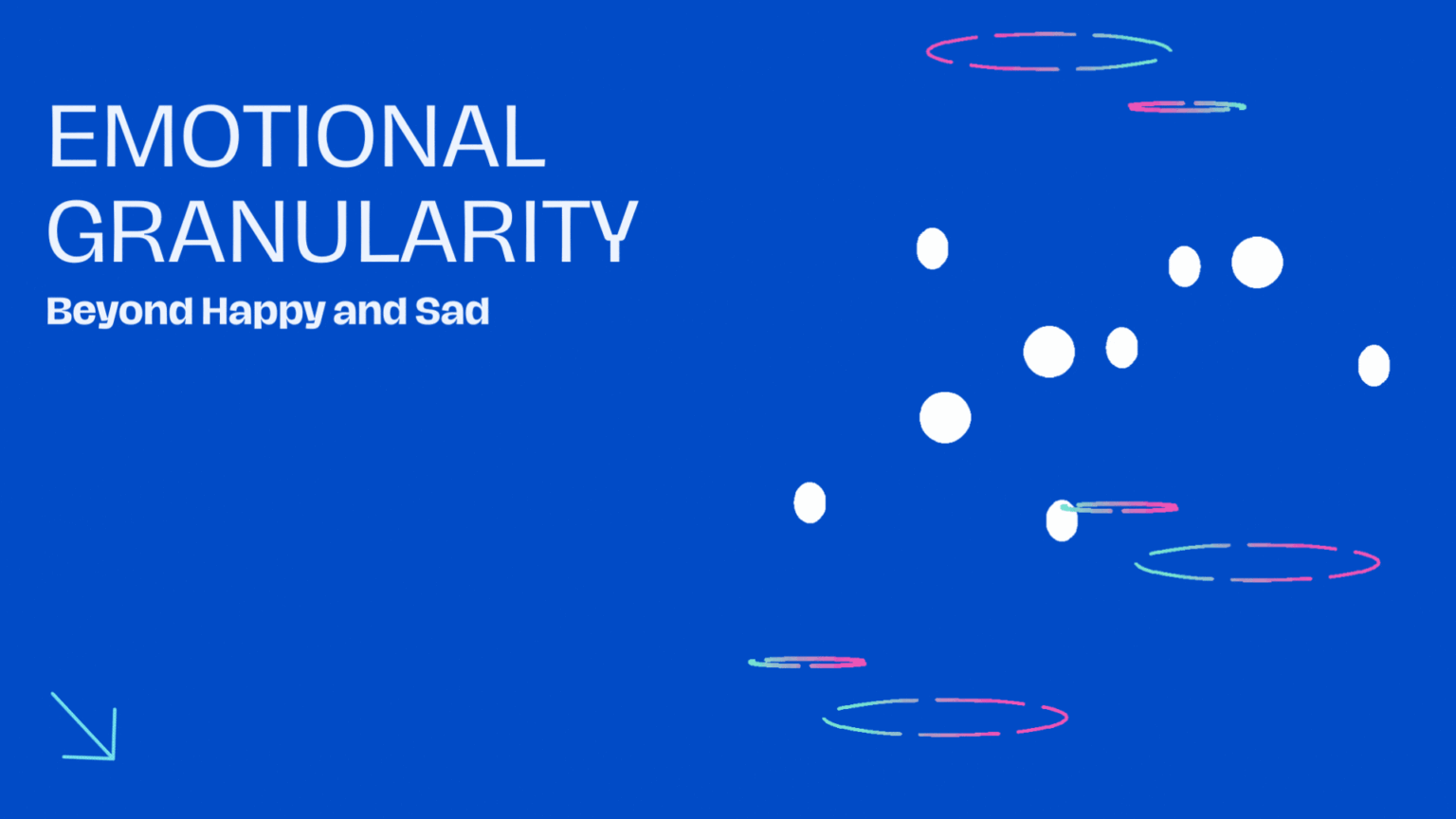The Role of Observing and Reporting in Thought Defusion
In the field of psychology, cognitive processes play an important role in shaping our thoughts, emotions, and behaviors. One particular aspect of cognitive processes is cognitive defusion, which refers to the ability to observe and report on our thoughts without getting caught up in their content or taking them as absolute truths. Cognitive defusion helps individuals develop psychological flexibility, a key component of acceptance and commitment therapy (ACT).
What is Cognitive Decentering?
Understanding the Concept of Cognitive Decentering
Cognitive decentering is a process that involves stepping back and observing our thoughts from a third-person perspective. It allows us to detach ourselves from the content of our thoughts and gain a more objective view of our mental processes. By doing so, we can recognize that thoughts are not necessarily facts and create distance from our negative thinking patterns.
The Benefits of Cognitive Decentering
Cognitive decentering has been found to have numerous benefits for mental well-being. It helps individuals challenge cognitive distortions, which are negative thought patterns that contribute to anxiety and depression. By observing and reporting on our thoughts, we can identify cognitive distortions and work towards replacing them with more adaptive and realistic thinking patterns. Cognitive decentering also enhances psychological flexibility, allowing individuals to be more open to new experiences and less controlled by their thoughts and emotions.
Techniques for Practicing Cognitive Decentering
There are various techniques that can help individuals develop and strengthen their cognitive decentering skills. One common technique is cognitive restructuring, which involves replacing negative thoughts with more positive and realistic ones. Another technique is cognitive reappraisal, where individuals reinterpret the meaning of a situation in order to change their emotional response. Additionally, mindfulness practices, such as meditation and breathing exercises, can also aid in enhancing cognitive decentering abilities.
How Does Observational Learning Contribute to Thought Defusion?
Exploring the Role of Observational Learning in Cognitive Processes
Observational learning, a process rooted in social cognition, plays an important role in thought defusion. Through observing others, we can learn new ways of thinking and behaving. This process is particularly relevant in challenging cognitive distortions, as witnessing others effectively manage their thoughts can serve as a model for individuals struggling with negative thinking patterns. Observational learning provides a systematic and relational frame for individuals to develop decentering skills.
Observational Learning as an Intervention for Cognitive Distortions
Research has shown that observational learning can be an effective intervention for cognitive distortions. By observing others challenge and reframe their negative thoughts, individuals can gain new perspectives and strategies for managing their own thought processes. This intervention can be particularly useful in cognitive behavioral therapy, where therapists incorporate observations of successful coping strategies into clients’ treatment plans. Observational learning helps clients see that their negative thoughts are not fixed or absolute, and that they have the ability to change their thinking patterns.
Applying Observational Learning in Cognitive Behavioral Therapy
In cognitive behavioral therapy, therapists often utilize observational learning techniques to help clients develop cognitive defusion skills. Through role-playing exercises and guided observations, clients learn to observe and report on their thoughts from a third-person perspective. By actively engaging in the process of observing and reporting, clients develop a greater awareness of their cognitive distortions and are empowered to challenge and replace them with more adaptive thoughts. Observational learning, in combination with cognitive restructuring and other therapeutic techniques, can lead to significant improvements in clients’ mental well-being.
The Relationship Between Decentering and Cognitive Distortions
Identifying Cognitive Distortions and Their Impact on Mental Well-being
Cognitive distortions are irrational and negative thought patterns that can have a significant impact on mental well-being. Examples of common cognitive distortions include all-or-nothing thinking, overgeneralization, and catastrophizing. These distortions often lead to increased anxiety, stress, and depression. By identifying and challenging these distortions, individuals can improve their mental health and overall well-being.
How Decentering Helps in Challenging Cognitive Distortions
Decentering plays a crucial role in challenging cognitive distortions. By observing and reporting on our thoughts, we can recognize when we are engaging in irrational or unhelpful thinking patterns. This awareness allows us to take a step back and question the validity of our thoughts, ultimately leading to their defusion. Through decentering, we can create distance from our cognitive distortions and develop more balanced and rational perspectives.
Training Decentering Skills for Individuals with Cognitive Distortions
For individuals struggling with cognitive distortions, training decentering skills can be a useful therapeutic approach. Therapists can guide individuals through exercises and interventions that promote cognitive decentering. One such technique is the use of the third-person perspective. By imagining ourselves as an objective observer, we can gain a more detached and less biased view of our thoughts. This practice helps individuals detach from their cognitive distortions and approach them with increased objectivity and resilience.
The Model of Decentering and Its Practical Applications
Understanding the Model of Decentering in Cognitive Psychology
In cognitive psychology, the model of decentering refers to the process of observing and reporting on our thoughts in a non-judgmental and detached manner. This model emphasizes the importance of gaining distance from our thoughts and recognizing them as transient mental events rather than absolute truths. By understanding the model of decentering, individuals can develop more adaptive cognitive processes and enhance their psychological well-being.
Applying the Model of Decentering in Daily Life
The model of decentering is not limited to clinical interventions but has practical applications in our daily lives as well. By incorporating decentering techniques into our routines, we can cultivate a more balanced and flexible mindset. For example, when faced with a negative thought, we can take a step back and objectively observe it rather than getting entangled in its content. This approach allows us to respond more effectively to challenges and reduces the emotional impact of our thoughts.
Using the Model of Decentering in Clinical Interventions
Clinical interventions, such as acceptance and action therapy (AAT) and cognitive behavioral therapy (CBT), frequently utilize the model of decentering to help individuals overcome psychological inflexibility. By incorporating decentering techniques into therapy sessions, therapists help individuals develop a more accepting and compassionate relationship with their thoughts. This process supports individuals in letting go of unhelpful thoughts and engaging in actions aligned with their values and goals.
Importance of Cognitive Defusion and Psychological Flexibility
The Role of Cognitive Defusion in Managing Cognitive Processes
Cognitive defusion plays a crucial role in managing cognitive processes and improving mental well-being. By observing and reporting on our thoughts without judgment or attachment, we can reduce the impact of negative thinking patterns on our emotions and behaviors. This process enables individuals to develop greater control over their cognitive processes and enhance their overall psychological well-being.
Enhancing Psychological Flexibility Through Cognitive Defusion
Psychological flexibility, a key outcome of cognitive defusion, refers to the ability to adaptively respond to thoughts and emotions in a way that aligns with one’s values and goals. By defusing from negative thoughts and challenging cognitive distortions, individuals can cultivate psychological flexibility. This, in turn, enables them to engage in more adaptive and meaningful behaviors, leading to increased well-being and life satisfaction.
Practicing Cognitive Defusion Techniques for Psychological Well-being
To enhance psychological well-being, it is important to incorporate cognitive defusion techniques into our daily lives. Practicing mindfulness meditation, journaling, and thought labeling are examples of techniques that promote cognitive defusion. By regularly engaging in these practices, individuals can strengthen their ability to observe and report on their thoughts without being overwhelmed by them. This leads to improved mental clarity, emotional regulation, and overall psychological well-being.
Q: What is the role of observing and reporting in thought defusion?
A: Observing and reporting play a crucial role in thought defusion. By observing our thoughts and emotions without judgment and then reporting them objectively, we can gain a better understanding of their impact on our well-being. This process helps us separate ourselves from our thoughts and reduces their influence over our actions.
Q: How does intervention relate to observing and reporting?
A: Intervention refers to the various techniques and strategies used to promote change and improve mental well-being. Observing and reporting is often used as an intervention technique in cognitive therapy to help individuals identify and challenge their negative thoughts. By observing and reporting their thoughts, individuals can gain insight into their cognitive patterns and work towards changing them.
Q: What is the significance of social learning in thought defusion?
A: Social learning refers to the process of learning through observation and imitation of others. In thought defusion, social learning can be highly beneficial. By observing others who have successfully applied defusion techniques and reporting their experiences, individuals can gain inspiration, motivation, and practical strategies to implement in their own lives.
Q: Are there any related terms that I should be aware of in the context of thought defusion?
A: Yes, there are several related terms that are important in the context of thought defusion. These include developmental psychology, cognitive therapy, decentering and related constructs, relational frame theory, and neurocognitive processes. Familiarizing yourself with these terms will provide a more comprehensive understanding of thought defusion and its applications.
Q: How does thought defusion relate to developmental psychology?
A: Thought defusion has connections to developmental psychology as it can be a valuable technique in promoting healthy cognitive development. By encouraging individuals to observe and report their thoughts, especially during critical periods of development, it becomes possible to identify and challenge cognitive patterns that may be hindering healthy growth and development.
Q: What is the role of cognitive therapy in thought defusion?
A: Cognitive therapy is an approach that focuses on identifying and changing negative thought patterns to improve mental well-being. Thought defusion is a technique used within cognitive therapy to help individuals challenge and loosen the grip of their negative thoughts. By incorporating thought defusion into cognitive therapy, individuals can gain greater control over their thinking and improve their overall psychological health.
Q: How does thought defusion relate to cognitive therapy for depression?
A: Thought defusion is an integral part of cognitive therapy for depression. It helps individuals suffering from depression challenge their negative thoughts and reduce their impact on mood and behavior. Through observing and reporting their thoughts, individuals can detach themselves from depressive thinking patterns and develop more adaptive ways of processing information.
Q: Can you provide information on the cognitive fusion questionnaire?
A: The cognitive fusion questionnaire is a psychometric tool used to measure the extent to which individuals are fused with their thoughts. It assesses the degree to which individuals believe and buy into their thoughts without critical evaluation. The questionnaire is often used in research and clinical settings to determine the effectiveness of thought defusion interventions and to track progress.
Q: what is the importance of observational learning in thought defusion?
A: Observational learning plays a significant role in thought defusion. By observing others successfully applying thought defusion techniques and reporting on their experiences, individuals can gain insights and learn from them. Observational learning models the process and provides valuable guidance, allowing individuals to more effectively implement thought defusion strategies in their own lives.
Q: Can you provide information about the process of defusion in thought defusion?
A: The process of defusion in thought defusion involves distancing oneself from thoughts and reducing their impact. It includes observing one’s thoughts, recognizing them as passing mental events, and reporting them without becoming entangled or fused with them. By engaging in this process, individuals can undermine the power of negative thoughts and regain control over their thinking patterns.










